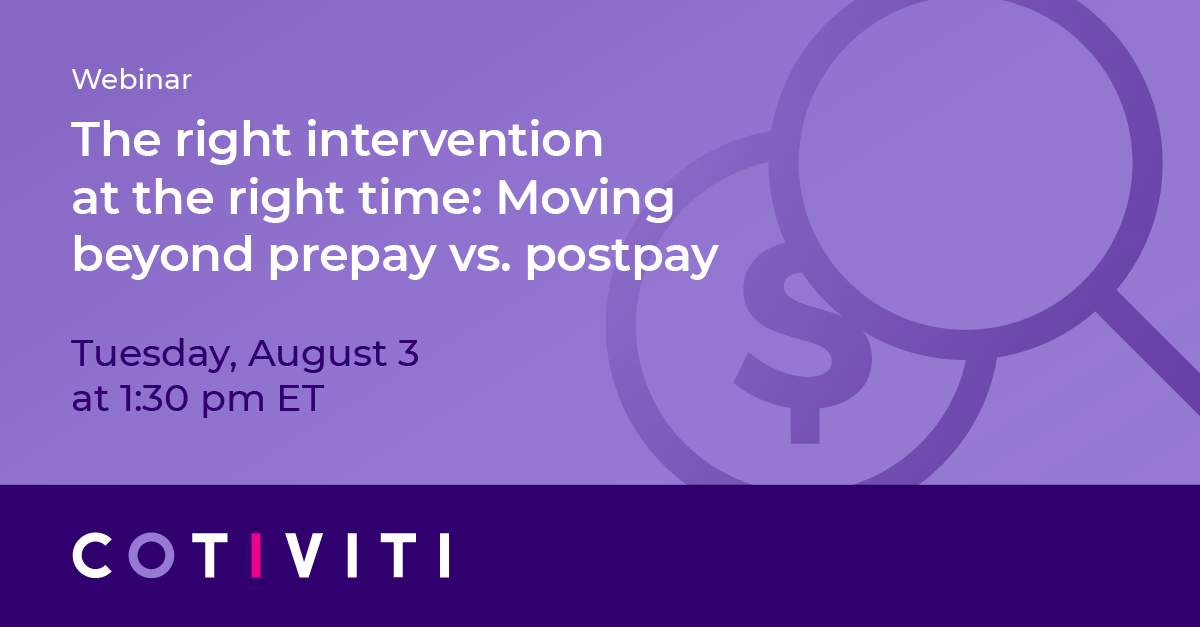Optimizing the employment verification (EV) process is vital to building a successful coordination of benefits (COB) program. From preparing internal teams to performing tailored outreach to employer groups, a complete and efficient EV process can ease administrative burden, continue to build strong relationships with employer clients, boost member satisfaction, and increase COB savings by 25–45% (based on a comparative review of Cotiviti COB clients with and without an EV process).
Often, a subscriber’s employment information is only updated during annual enrollment periods. As a result, changes that occur during the year often go unreported to the plan. While many plans already conduct employment verifications, plans can always benefit from strategic and process-based enhancements, including additional resources to obtain and document all necessary information. With a robust EV process in place, plans can capture these working status changes throughout the year—with the added benefit of ensuring compliance with federal regulations and providing assurance that subscribers’ benefits are being coordinated accurately.
Here, we offer three important elements a plan should incorporate when building a successful EV process and integrating it into an existing COB payment integrity program.
Robust internal education and communication
Integral to the success of a new EV process is securing alignment and buy-in from internal teams, particularly the account executives who serve as the “gatekeepers” to your employer groups. Plans must ensure internal stakeholders are educated on the purpose of employment verifications and understand its critical value to COB programs. If account executives are not aligned on the importance of obtaining up to date employment status, it is unlikely that other downstream stakeholders will embrace data collection efforts. This disconnect can lead to fragmented and inconsistent outreach to external partners as well as employee discontent.
Leaders must talk with the internal team about the outreach process, methods, and timelines. Educational materials are also essential for training. Based on Cotiviti’s experience, the most prevalent questions from internal teams focus on how employer groups and members will be contacted, how frequently, and how the outreach will be tailored. Account teams should also be highly focused on how to communicate with sensitive groups, such as those that are coming up for renewal. Involving these teams in the process from the beginning helps to build internal champions for your EV program.
Tailored employer group outreach
When speaking with employer groups, authenticity and transparency are key. Plans should thoroughly explain how the EV process maximizes the member’s available sources of payment for medical claims as well as the frequency and method of outreach. Providing written communications, such as sample employee questionnaires and FAQs, as well as offering virtual Q&A sessions, is highly beneficial.
Inadequate preparation and communication with external partners can undermine the entire process. For example, some employer groups maintain rigid administrative calendars. Plans should work within these parameters to ensure they ask for data on days that groups have the bandwidth to process requests. Working around employer groups’ needs is required to gain access to all necessary data each time there is an update, without creating friction and causing undue delay. These steps are vital to creating up to date and accurate subscriber profiles, including working status.
Structured data gathering and dissemination
Once plans have support from internal team members and have built relationships with external partners, the data collection process begins. Often, the first step will be to reach out to employer groups through email or by phone to gather specific, tailored pieces of COB relevant information. Plans can develop specific criteria to determine which members to inquire about to maximize the ROI of each outreach. For example, plans may focus on retirement-eligible subscribers or those with a recent inpatient stay. Then, a well-documented and tracked outreach effort is needed to ensure consistent data is collected. Finally, plans should share the results of their efforts with internal partners to demonstrate the tangible value of the EV program and secure buy-in for program continuity.
Up to-date and accurate data, internal alignment, and strategic and thoughtful outreach are all key to a successful EV process. By injecting tangible results into internal and external outreach while ensuring communications are clear and accurate, plans can drive home the importance of the EV process while creating advocates for the program.
While building and executing a strong EV process can be a daunting task, by engaging the right partner, plans can augment the value and impact of their existing COB payment integrity programs. Read our fact sheet and learn how Cotiviti’s COB Validation solution eases the burden on health plans by delivering deep and broad COB determinations, both prospectively and retrospectively.






